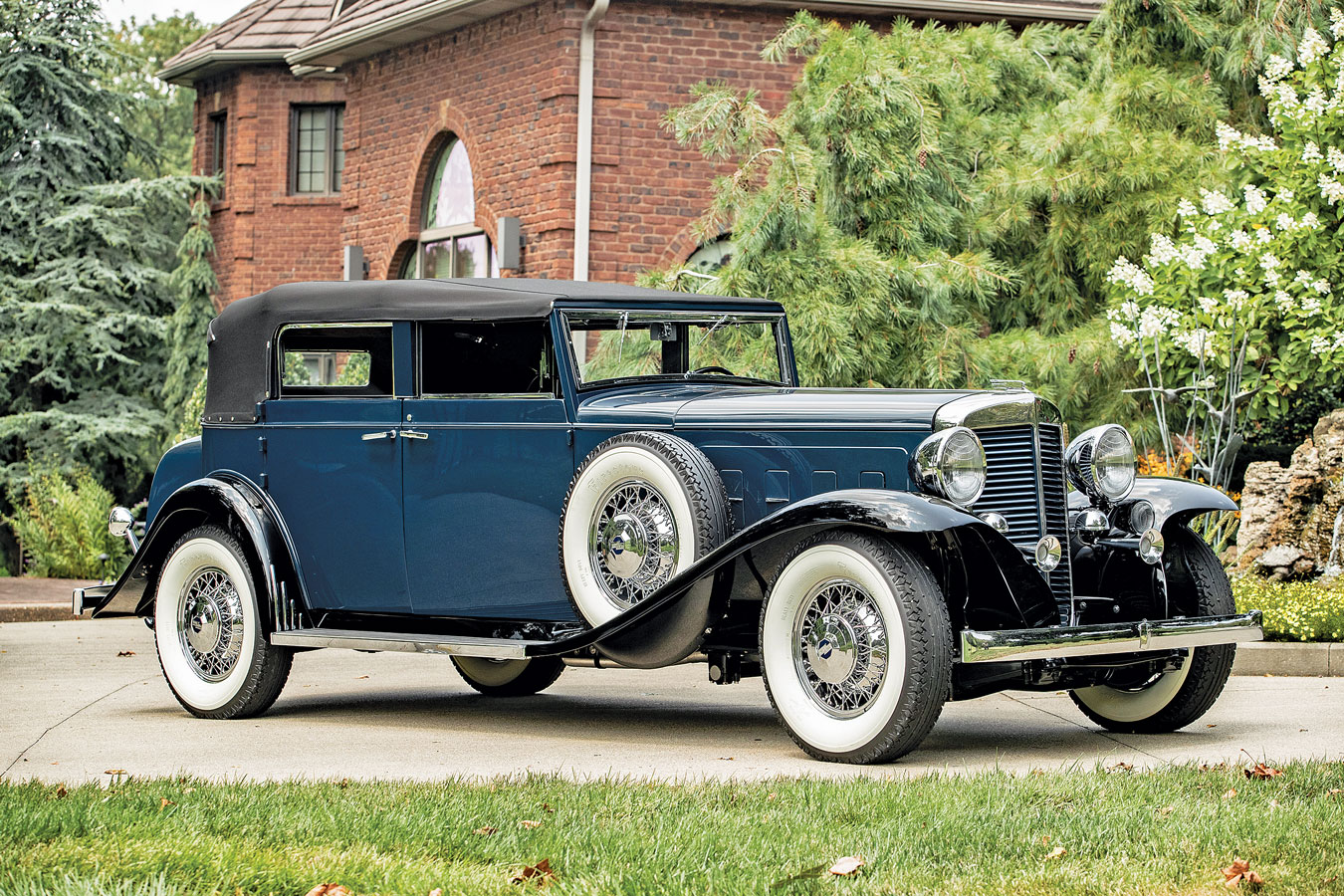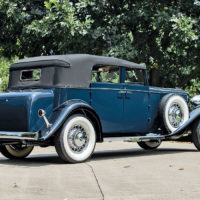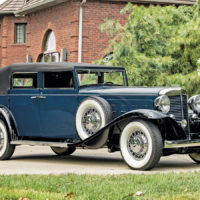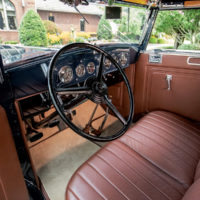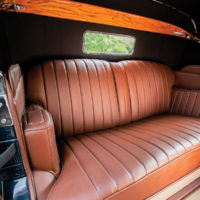SCM Analysis
Detailing
| Vehicle: | 1933 Marmon Sixteen Convertible Sedan |
| Years Produced: | 1931–33 |
| Number Produced: | 390 |
| SCM Valuation: | $766,500 |
| Tune Up Cost: | $2,000 |
| Chassis Number Location: | Left side of frame rail |
| Engine Number Location: | Left side of block |
| Club Info: | The Marmon Club |
| Website: | http://www.themarmonclub.com |
| Alternatives: | 1933 Cadillac V16, 1931 Peerless V16, 1933 Packard Twelve |
| Investment Grade: | A |
This car, Lot 14, sold for $368,000, including buyer’s premium, at Bonhams’ Audrain Concours Auction on Oct. 1, 2021.
The Marmon Sixteen slogan was “The World’s Most Advanced Motor Car.” That was more than just a slogan, as the Marmon was a marvelous machine, with crisp, clean styling and powered by an innovative 16-cylinder engine. However, it never had a chance. Many of Marmon’s problems were self-inflicted, but the dark cloud from the Great Depression hastened the automaker’s demise.
Win on Sunday
Like many automobiles of its era, the Marmon was born from early industrial heritage. Daniel Marmon and a man named Nordyke formed an engineering firm that was soon the world’s largest producer of milling machines. Daniel’s son Howard, with an engineering degree from the University of California, joined the firm in 1899 and persuaded his father to allow him to design an automobile in a corner of the plant. The car was well received, although the high price limited sales.
As was often the case in the day, Marmon set out to make a name for itself at the racetrack. And what a name it made.
In 1911, the Marmon Wasp won the first Indianapolis 500, and Howard Marmon left with $16,000 in prize money and more orders than he could handle. Marmon, however, had little interest in producing race cars, and the passenger car based on the Wasp was priced at $5,000 to $6,250, a fortune at that time.
A new Marmon 34 did, however, attract the automotive eye, as it set a new record traveling from New York to San Francisco. In 1916 it broke the previous record set by “Cannonball” Baker in a Cadillac V8 by an impressive 41 hours.
Sweet Sixteen, small sales
Marmon’s expansion was rapid — far too rapid — and the perception of the Marmon was varied, as it was trying to be all things to all people. Marmon had introduced the entry-level Roosevelt, but that had an adverse effect on its “fine car” image.
Marmon desperately needed something to enhance its position, and Howard Marmon’s dream was a 16-cylinder automobile that offered 200 horsepower, could exceed 100 mph, and would be priced at not more than $5,000. The Marmon Sixteen did just that.
Marmon began developing the Sixteen in 1926. It set up a dummy firm, the Midwest Aviation Company, to disguise its efforts. (Cadillac did not begin its own 16-cylinder program until a year later.) Marmon had a few false starts and took its time to ensure that it had a superior product. The first design was far too expensive, and Marmon was forced to start over.
Cadillac, on the other hand, with extensive resources, quickly developed a V16 engine and brought it to market a year before Marmon, cornering a rather limited market.
In 1933, Marmon abandoned its other models and went all-in on the Sixteen. In the three-year production run, only 390 were sold, with only 56 in 1933. The end was in sight, and in May of 1933, Marmon was in receivership.
A waning market
The Marmon Sixteen offered by Bonhams was one of about 11 surviving Convertible Sedans. It had received a comprehensive restoration that began in 2012 and was documented with $691,000 in receipts. The Walter Dorwin Teague Sr. design had been well executed by LeBaron, and the car was exceptional in all regards.
Arguably, the Marmon Sixteen is a better value than the comparable Cadillac, with advanced engineering and more-modern styling. Interest in Marmons, however, has been waning, with the market drifting downward from the current SCM Median Value of $767k. This is an exceptional automobile in superb condition and at the price paid was well bought indeed, more for its value per dollar than as an investment. ♦
(Introductory description courtesy of Bonhams.)
